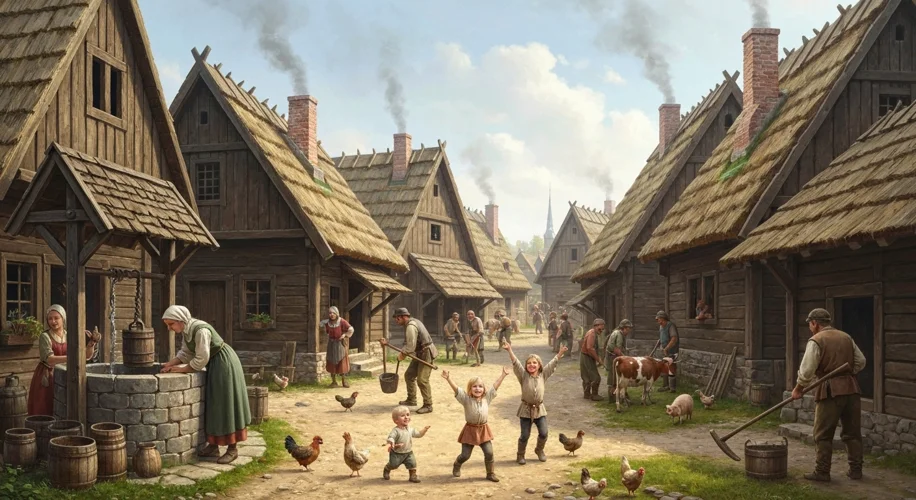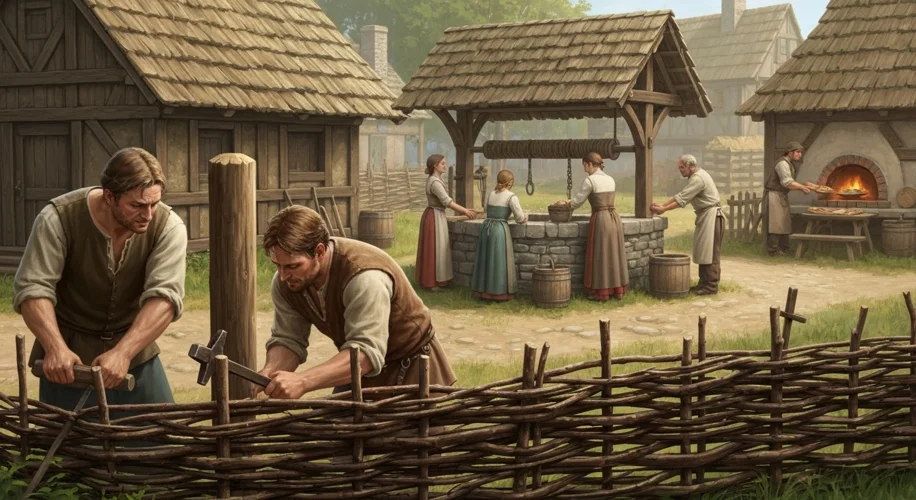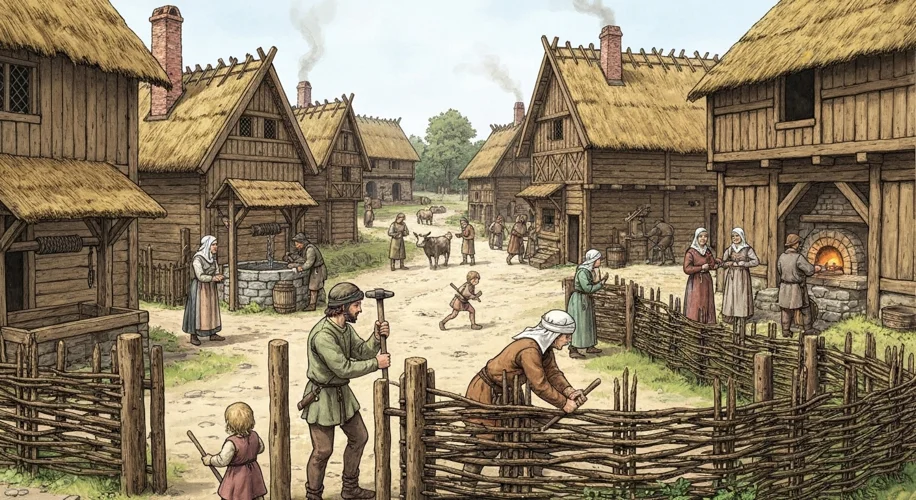The year is 1348. Outside the sturdy, yet humble, wooden walls of a village nestled in the heart of Central Europe, the wind whispers tales of plague and distant wars. But within these confines, life, though challenging, hummed with a distinct rhythm of communal living. This wasn’t a world of solitary farmers toiling in isolation; it was a vibrant ecosystem of shared responsibility, where neighbors were bound by more than just proximity – they were united by the very fabric of their daily existence.
Imagine waking to the crow of a rooster, the smell of woodsmoke already perfuming the crisp morning air. Your home, likely a simple wattle-and-daub structure with a thatched roof, stands cheek-by-jowl with your fellow villagers. Privacy, as we understand it today, was a luxury few could afford. Instead, life unfolded in shared spaces: the communal oven, the village well, and the open fields that provided sustenance for all. This proximity fostered a unique social dynamic, one where cooperation was not just encouraged, but essential for survival.

At the heart of this communal existence lay a sophisticated, albeit informal, system of governance. While lords and rulers existed in the distant castles, the day-to-day affairs of the village were largely self-managed. Picture a gathering in the village square, perhaps under the shade of an ancient oak tree, where matters of importance were debated and decided. The village elder, or perhaps a small council of respected individuals, would preside. Disputes, the inevitable friction points in any close-knit society, were brought before these gatherings.
Consider a quarrel over a stray pig that had rooted its way into a neighbor’s prize cabbage patch. Instead of escalating to bloodshed or a costly trip to a distant manor court, the issue would likely be addressed here. Witnesses would be heard, past grievances acknowledged, and a judgment rendered. This was not always a perfect system; favoritism and personal vendettas could certainly play a role. However, the overwhelming need for social cohesion meant that resolutions were generally sought that would allow the community to move forward, preventing lingering resentments from fracturing the village’s stability.
This spirit of collective responsibility extended to the very infrastructure of their lives, particularly concerning waste management and property maintenance. In a world without modern sanitation, the challenge of keeping a village healthy was immense. While formal systems were rudimentary, the understanding of shared consequences was acute. Think of the communal pigsties, strategically located away from the living quarters and water sources. These weren’t just for raising livestock; they served a vital role in consuming household waste, turning potential health hazards into valuable fertilizer. Similarly, designated areas for refuse collection, often at the village periphery, were understood to be everyone’s concern. Failure to participate meant an unhygienic environment for all, increasing the risk of disease that could sweep through the tightly packed homes like wildfire.
Property maintenance was another area where communal effort was crucial. A shared fence bordering common land, a bridge over a nearby stream, or even the upkeep of the village church – these were tasks that often required more hands than one household could provide. In times of need, villagers would band together, contributing labor and resources. The success of the harvest, the defense of the village against minor threats, and the general well-being of the community depended on this mutual aid.

The concept of private property existed, but it was often interwoven with communal rights and responsibilities. Fields might be individually owned, but the strips of land were often interspersed, requiring cooperation in planting and harvesting. Pastures were almost always communal, demanding agreements on grazing limits to prevent overconsumption. Even the very paths and lanes that connected their homes were, in a sense, shared territories, demanding a collective stewardship.
This intricate web of interdependence is what made medieval village life so unique. It was a world where individual needs were often subordinate to the collective good, not out of coercion, but out of sheer necessity and a deeply ingrained sense of community. The lessons learned in these small, self-governing units – of cooperation, conflict resolution, and shared responsibility for their environment – echo through the centuries, reminding us of the fundamental human need to belong and to build together, even in the face of adversity. It was a life that, while seemingly harsh by modern standards, possessed a profound social strength, forged in the crucible of shared existence.

